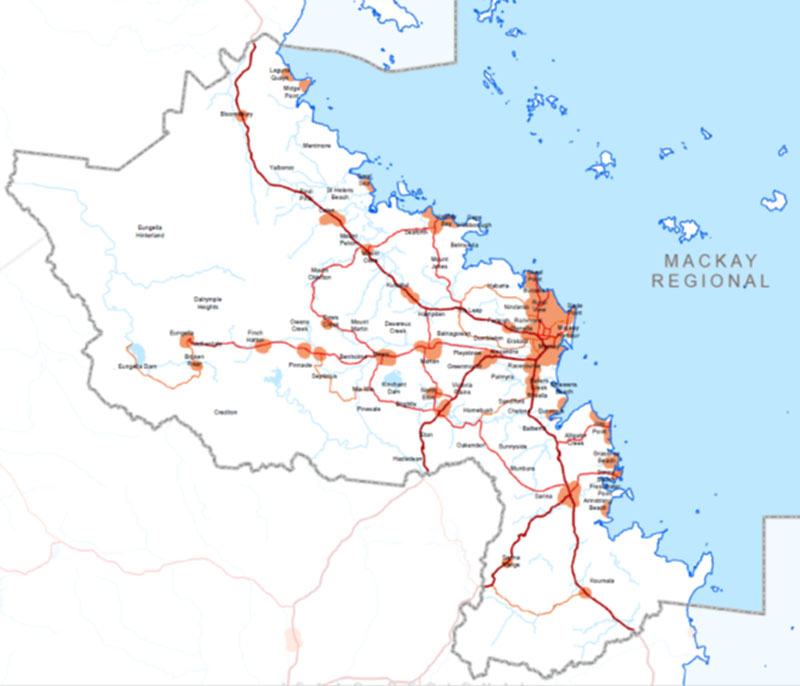Flying Foxes control
Mackay Regional Council is aware of a number of flying-fox roosts located in the Mackay region. Together with the Department of Environment and Heritage Protection, council officers monitor these roosts and respond to community concerns.
Legal requirements
In November 2013, Queensland Government introduced an "as-of-right" authority under the Nature Conservation Act 1992, enabling Local Government to undertake non-lethal management of flying-fox roosts in designated urban flying-fox management areas (UFFMA's).
This "as-of-right" does not require that Mackay Regional Council take action merely because a roost may exist in an urban area but rather that, should action be required, the council may act without applying for a Flying-fox Roost Management Authority.
Notification of the intended action is still required to be submitted to the Department of Environment and Heritage Protection a minimum of 48 hours prior to any activity and all activities must comply with the Queensland Government Flying-fox Management Guideline and the Codes of Practice issued under the Nature Conservation Act 1992.
Outside of the designated UFFMA's, any activity, undertaken by Mackay Regional Council or private landholders, which will interfere with a flying-fox roost will require a Flying-fox Management Authority, issued by the Department of Environment and Heritage Protection.
It is an offence under the Nature Conservation Act 1992 to undertake any disturbance activity with regard to flying-fox roosts without authorisation.
What council intends to do
Council are aware of the important role that flying-foxes play in the environment and will not interfere with a roost in the Mackay region without full and reasonable consideration to risks to human health and wellbeing as well as interference with human amenity.
Should such considerations determine the need for management activity, non-lethal actions, as prescribed in the Queensland Government Code of Practice – Ecologically sustainable management of flying-fox roosts, may be undertaken on Council owned or managed properties.
What private landholders can do
Private property owners who wish to undertake low impact activities, mowing, mulching, weeding and minor trimming of trees, on their own land may do so as specified in the 'Low impact activities affecting flying-fox roosts Nature Conservation Act 1992 Code of Practice'.
For any activities not considered "low impact" but intended to manage flying-fox roosts located on private property, the landowner may request approval from Mackay Regional Council to operate under the "as-of-right" authority or apply directly to the Department of Environment and Heritage Protection for a Flying-fox Roost Management Authority.Any dispersal activity on private land will be conducted at the expense of the land-owner.
Health risks
In 1996 Australian bat lyssavirus (ABL) was first identified in flying-foxes.
Although all flying-foxes have the potential to be contaminated with ABL, only a small percentage of animals carry the virus.
ABL can only be transmitted to humans when saliva from an infected animal comes in contact with human tissue through an open wound (a scratch or a bite) or with mucous membrane (eyes, nose and mouth.
This can occur even in the first few hours after an animal has died so no flying-fox, alive or dead, should be handled.
Humans are not exposed to Australian bat lyssavirus through living or working near a roost or an area where flying-foxes may be feeding.
Further information about flying-foxes
For more information about bats and environmental issues, including safe netting and damage mitigation permits, visit the Department of Environment and Heritage Protection at http://www.ehp.qld.gov.au/ or phone 13QGOV (13 74 68).
For more information on ABLV and human health, visit Queensland Health at www.health.qld.gov.au or phone 13HEALTH (13 43 25 84).
For more information on ABLV or animal health, visit Biosecurity Queensland's website at www.daff.qld.gov.au or phone 13 25 23.

